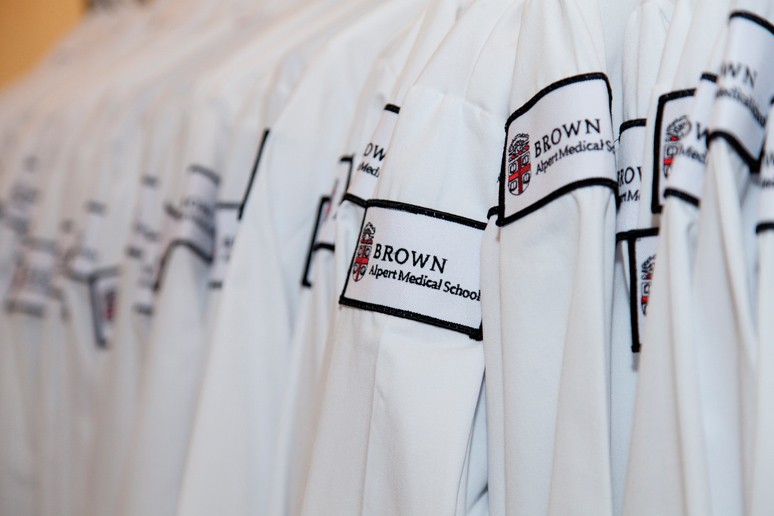For many, financial aid makes medical education possible.
The cost of medical education, at Alpert Medical School as elsewhere, severely strains the resources of many students and their families, and can be prohibitive to some. With annual costs of attendance now nearing $80,000, it is urgent to find ways to reduce the burden.
Greta Solinap MD’19 says it was her financial aid package that allowed her to attend Brown; otherwise she would have gone to medical school in her home state of Arizona. “It has allowed me to think much less about finances and more about my studies and what type of doctor I want to be,” she says.
“I couldn’t imagine going through medical school without financial aid,” Tian Ran Zhu MD’17 says. “The funding has alleviated a huge financial burden on my family’s shoulders and has made me all the more appreciative of my school and how Brown has continually supported its students through their medical education.”
Lei Ding, MD, a neurologist, and Jean H. Chen, MD, a physiatrist, say the happiness of their daughter, Julia Ding MD’17, at Brown inspired them to help other students. Graduates of Beijing Medical University who now work in New York City, the couple decided to fund a medical scholarship through their family foundation after attending an Alpert Medical School information session in Brooklyn last spring.
Ding says he and his wife have been impressed by the School’s approach, including combining research and medical training. They hope the Lei Ding, MD, and Jean H. Chen, MD, Medical Scholarship will encourage recipients to be “better students and better doctors,” he says, and concentrate more on studies and worry less about money.
Alpert Medical School has $8.3 million for student financial aid, says Linda Gillette, the director of financial aid. More than half, $4.6 million, comes from donors, making them an essential source of support. Of the current 524 students, more than two-thirds receive aid, including 256 students who receive scholarships, which don’t need to be paid back.
Gillette says the Medical School works hard to keep students’ debt as low as possible. The Class of 2015 graduated with an average debt of $123,000, down slightly from the previous year. She says scholarship gifts are important “so our students aren’t borrowing outrageous funding.”
And aid inspires recipients. “I feel privileged to attend a renowned medical school at Brown,” says Zhu, who was an undergraduate at the University of California, Berkeley. “I have been inspired to study hard, give back to my community, and participate in the Brown Medical Annual Fund. I have donated to the fund each year and value the importance of donors to help support future medical student scholarships.”
Solinap spent two years working on public health projects in the Philippines before starting medical school. “Attending Brown and studying in Rhode Island offer me unique and valuable experiences that align with my personal interests in medicine,” she says. “Providence and nearby cities have diverse groups of immigrants, Spanish-speaking populations, and underserved communities. There are also many pioneers and leading researchers in public health, pediatrics, and holistic care that I look forward to interacting with.”




